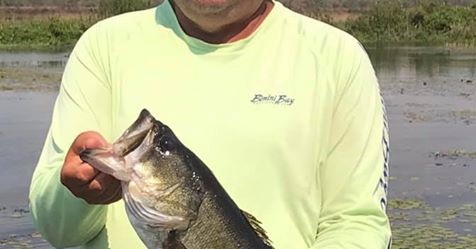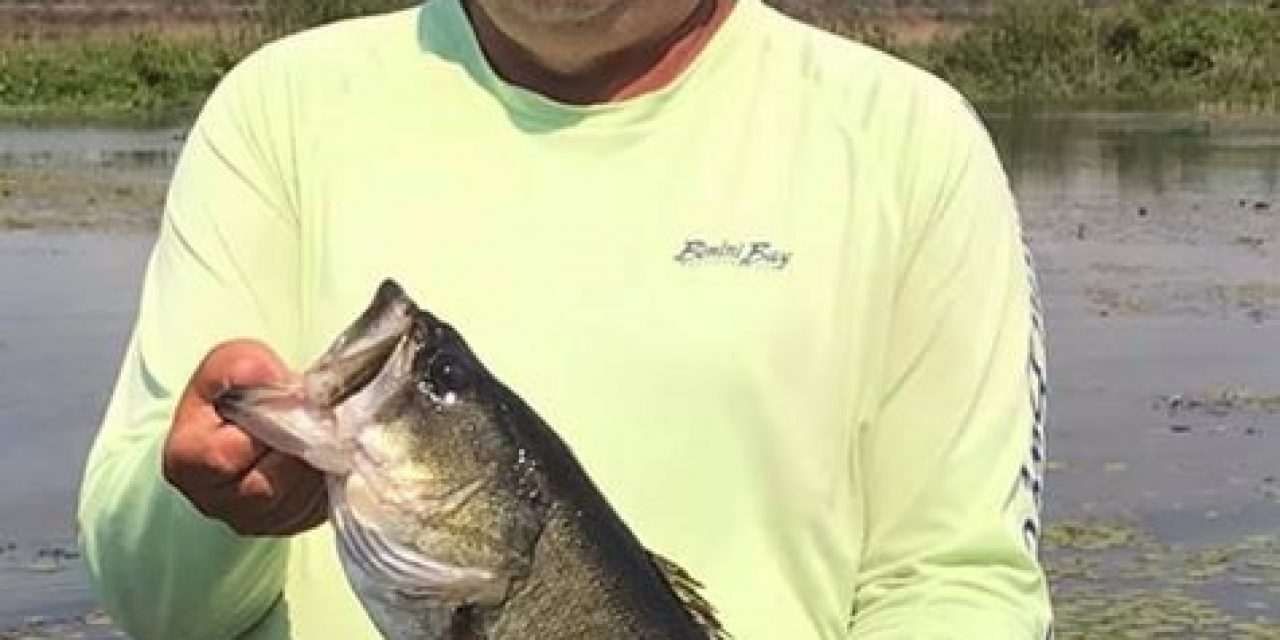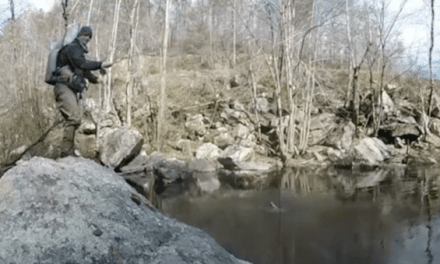 Mention plastic worms to most bass anglers and they visualize slim-profile baits 6 or 7 inches long – the kind that were the soft-plastic staple for decades. All anglers know about them, but in recent times, traditional plastic-worm fishing has slipped quietly into the background, while tubes and finesse plastics gained momentum as prime tournament tools. However, swimming a big 10-inch worm over and around structure especially grass edges has been a well-kept secret of the pros for sometime now. We all know that 10-inch worms are great big bass lures. I have caught many big bass (bass up to 10 pounds) on them. I feel these big plastics are more versatile than most anglers realize.
Mention plastic worms to most bass anglers and they visualize slim-profile baits 6 or 7 inches long – the kind that were the soft-plastic staple for decades. All anglers know about them, but in recent times, traditional plastic-worm fishing has slipped quietly into the background, while tubes and finesse plastics gained momentum as prime tournament tools. However, swimming a big 10-inch worm over and around structure especially grass edges has been a well-kept secret of the pros for sometime now. We all know that 10-inch worms are great big bass lures. I have caught many big bass (bass up to 10 pounds) on them. I feel these big plastics are more versatile than most anglers realize.
A well-kept secret of the pros
In certain situations, it is really the best choice. Watercolor and the size of the fish where your fishing will help you decide when it is time to rig up a giant worm. In stained or dark water that has heavy cover and a good number of quality fish, I will go with the 10-inch Worm. It has a big profile that is appealing to those fish.
When you are fishing one of these larger lures, you will also catch small bass, but when you are fishing a small lure, your chances of catching a big bass drop considerably. The action when swimming a 10-inch worm is amazingly life like and nearly compels the bass to strike.
It is ideal for shallow cover areas, and off the edges of weed lines. Because it has a larger profile and better visibility, you can fish it just about anywhere. I often times put a small 1/8 or 3/16 ounce weight at the nose of the worm and fish deeper grass edges and brush piles in 10 to 15 feet of water.

Because of its big profile will draw fish out of the grass
Fishing this way, the worm, because of its big profile will draw fish out of the grass or brush when other presentations fail. To bass, the lure may appear to be an eel, or baitfish; regardless, because of all that swimming action fish can literally be pulled away from the structure and tempted into striking.
The swimming technique is by far the easiest way to fish a plastic worm. Simply cast it out let it sink to the desired depth and slowly reel it in! Yes, it is that simple! The secret is not to allow it to actually touch the bottom. Simply retrieve it at a slow, steady retrieve with a slow rise and fall of the rod tip. What could be simpler? You occasionally want to feel the bait tick the brush, structure or grass tops as you are slowly retrieving the lure. I use this rig a lot when fishing deeper weed edges. This is a killer technique when the fish are suspended in the grass along river and creek channels. Keep in your mind that all we really want is for the big 10-inch worm to run just fast enough to provide a slow tail action.
Most of your hits will be very light
Position your boat in deeper water and cast the 10-inch worm up to the shallower top of the grass. Slowly retrieve the worm back to the boat pausing enough to allow the worm to tick the top of the grass as it sweeps down the ledge. Pay close attention to your line, most of your hits will be very light. Most often, you will only notice a slight twitch in your line, or it will slowly swim off to the side. This technique is at its best in exceptionally hot weather, giving us a good tool for catching tough summer time bass.
The best way to rig the swimming worm successfully is to use the old standby Texas rig. The Texas rig has been around for a long time. Slide a bullet weight 1/8 to 3/16 ounce on the line before tying on the hook. Once you thread the worm on the hook, the sinker sits on its head like a cap, or like the pointed nose of a live worm. This rig slips through grass, brush and any type of structure without hanging. With a Texas rig and a lighter sinker, you will not get bogged down in the grass as much, and it is much better when you are bringing your lure through brush.
I hope you enjoyed and maybe learned something from this Fishin Factors tip.
Lee Bailey Jr
The post Fishing a 10-inch worm – By Lee Bailey Jr. appeared first on OutDoors Unlimited Media and Magazine.
















